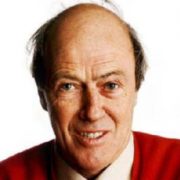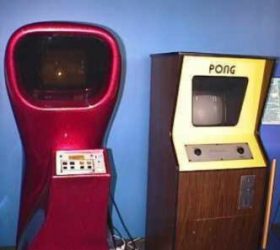
Roald Dahl
Today is Roald Dahl Day. September 13, 2017, would have been the beloved children’s book author’s 101st birthday.
Dahl is best known for Charlie and the Chocolate Factory, James and the Giant Peach, The BFG, Matilda and Fantastic Mr. Fox. His dark, twisted sense of humor has endeared him to generations of young readers.
*****
A lesser-known fact about Dahl is that he was a fighter pilot for the Royal Air Force (RAF) during World War II. On September 19, 1940, he ran low on fuel while searching for an airstrip in Egypt. The plane struck a rock as he attempted to land in the desert. His skull and nose were fractured and he was temporarily blinded in the crash. (The RAF’s inquiry found that the directions provided to Dahl had been completely wrong.)
He was rescued and taken to a hospital in Alexandria, where he recuperated for the next four months, then rejoined his squadron. He flew dozens of sorties and shot down several German planes in the next few months until he began having headaches so severe that he blacked out. He was sent home but still hoped to become a flight instructor for the RAF.
In March 1942, while in London, Dahl met Major Harold Balfour, who recruited him to supply intelligence to British Security Coordination, a Stateside arm of MI6, and Prime Minister Winston Churchill. (His official title was “assistant air attaché” at the British Embassy in Washington, D.C.) He later said, “My job was to try to help Winston to get on with Roosevelt, and tell Winston what was in the old boy’s mind.”
*****
Dahl also contributed to medicine. In 1960, his four-month-old son Theo’s carriage was hit by a taxicab in New York City. The baby’s skull fracture resulted in hydrocephalus, a condition treated with a shunt to drain excess fluid from the brain. But it often became blocked, causing pain and blindness, necessitating emergency surgery and risking permanent brain damage or death.
After moving his family to England, Dahl entrusted his son’s care to neurosurgeon Kenneth Till, who agreed that the standard shunt in use at the time was flawed. At his insistence, Till met with hydraulic engineer Stanley Wade, and they collaborated to invent the Wade-Dahl-Till valve, which was sturdy and easy to sterilize with negligible risk of blockage.
By the time the valve was perfected in 1962, Theo no longer needed it, but it proved so effective and inexpensive—the three men agreed to take no profit from its invention—that several thousand children benefited from it before technology advanced beyond it.
*****
There are too many tales of triumph and tragedy in the life of Roald Dahl to enumerate here. A great place to find many of them is Storyteller: The Authorized Biography of Roald Dahl by Donald Sturrock. We choose to share this last one with you and think he would laugh at its surprise ending.
On November 12, 1990, at age 74, Dahl was admitted to the John Radcliffe Hospital in Oxford, England, with complications of a blood disease called myelodysplastic syndrome. He knew the end was nigh; it would be fair to assume that, as an author and raconteur, he’d given the issue of his last words a bit of thought.
Eleven days later, surrounded by family, Roald Dahl said, “You know, I’m not frightened. It’s just that I will miss you all so much,” then closed his eyes and appeared to fall asleep. As everyone sat quietly around him, a nurse injected him with morphine to ease his passing, and he uttered his last words: “Ow, f*ck!” (He used a vowel; we’ll let you fill it in.)


![]()



